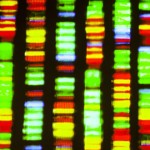Glucocorticoid Tapering
The long-term extension study added to the clinical trial program’s overall findings, demonstrating effective glucocorticoid tapering experienced by pediatric sJIA patients on canakinumab therapy.
“We know glucocorticoid discontinuation is extremely important for pediatric patients to avoid the long-term side effects, especially on growth,” Dr. Ruperto says.
Among the 128 total trial (N=177; 72.3%) patients on canakinumab therapy who were taking glucocorticoids at the beginning of Trial 2:
- 38 (29.7%) patients discontinued glucocorticoid therapy by Month 6;
- 51 (39.8%) patients discontinued glucocorticoid therapy by the two-year mark; and
- By Year 5, 20 (15.6%) patients had discontinued glucocorticoid therapy.
Practical Implications
With the findings of the long-term extension study published, a deeper understanding of how patients with sJIA react to canakinumab treatment is realized. “Overall, response to canakinumab treatment was sustained and associated with substantial glucocorticoid dose reduction or discontinuation,” Dr. Ruperto explains. “Also, no new safety findings were observed on long-term use of canakinumab.”
For pediatric rheumatologists considering the implications of these findings in clinical care, Dr. Ruperto says this understanding of time to response (early vs. late) will facilitate physicians in their decision making to keep patients on canakinumab or switch them to another treatment in a timely manner.
Carina Stanton is a freelance science journalist based in Denver.
References
- Ruperto N, Quartier P, Wulffraat N, et al. A phase II, multicenter, open-label study evaluating dosing and preliminary safety and efficacy of canakinumab in systemic juvenile idiopathic arthritis with active systemic features. Arthritis Rheum. 2012;64:557–567.
- Ruperto N, Brunner HI, Quartier P, et al. Two randomized trials of canakinumab in systemic juvenile idiopathic arthritis. N Engl J Med. 2012;367:2396–2406.
- Ruperto N, Brunner HI, Quartier P, et al. Canakinumab in patients with systemic juvenile idiopathic arthritis and active systemic features: Results from the 5-year long-term extension of the phase 3 pivotal trials. Ann Rheum Dis. 2018 Sep 29. pii: annrheumdis-2018-213150. [Epub ahead of print]
- Pascual V, Allantaz F, Arce E, et al. Role of interleukin-1 (IL-1) in the pathogenesis of systemic onset juvenile idiopathic arthritis and clinical response to IL-1 blockade. J Exp Med. 2005;201:1479–1486.
- Sandborg C, Mellins ED. A new era in the treatment of systemic juvenile idiopathic arthritis. N Engl J Med. 2012 Dec 20;367(25):2439–2440.

